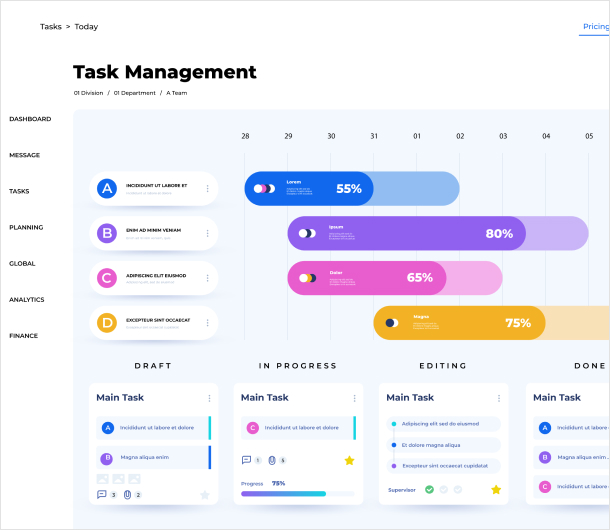CGKY News Hub
Your go-to source for the latest insights and trends.
Angular Antics: Building Dynamic Web Experiences
Discover the magic of Angular! Unleash dynamic web experiences and elevate your coding skills with our expert tips and tricks. Click to learn more!
10 Essential Angular Features for Dynamic Web Development
Angular is a powerful framework for building dynamic web applications that enhance user experience through seamless interactions and responsiveness. One of its most essential features is two-way data binding, which allows automatic synchronization between the model and view components. This means that any changes in the user interface reflect instantly in the application’s data model and vice versa. For an in-depth understanding of how this feature works, check out this Angular guide.
Another critical feature is dependency injection, which improves code organization and testing by providing a way to manage service dependencies efficiently. Angular's design encourages a modular approach to development, making it easier to build and maintain applications. Additionally, features like Reactive Forms and Lazy Loading enhance performance and usability, ensuring that only the necessary modules are loaded at runtime. For more details on Angular's features, visit this comprehensive resource.

How to Build Interactive User Interfaces with Angular
Building interactive user interfaces with Angular can significantly enhance the user experience of your web applications. Angular provides a robust framework that allows developers to create dynamic and responsive interfaces. To start, you should familiarize yourself with key concepts such as components, modules, and services. For detailed guidance on Angular's core features, you can visit Angular Architecture Guide. Additionally, utilizing Angular's powerful data binding capabilities enables seamless synchronization between the model and the view, ensuring your UI elements reflect real-time changes without requiring additional coding effort.
Furthermore, implementing interactive features such as forms, buttons, and navigation can be achieved effectively through Angular's built-in directives and services. For instance, using Reactive Forms allows you to manage user input dynamically and validate data efficiently. To make the most of your user interface, consider exploring Angular Material for pre-built UI components that facilitate a modern look and feel. This not only speeds up development but also ensures a consistent design throughout your application. Explore more about these components at Angular Material Documentation.
What Makes Angular the Go-To Framework for Dynamic Web Applications?
Angular has become a dominant choice for developers building dynamic web applications due to its robust framework and comprehensive features. One of the key elements that set Angular apart is its two-way data binding capability, which enables seamless synchronization between the model and the view. This functionality not only enhances user experience but also minimizes the need for extensive coding. Moreover, Angular’s modular architecture allows for the development of reusable components, making it easier to manage and scale applications. For more information on Angular's features, visit Angular Architecture.
Another significant advantage of Angular is its rich ecosystem, which includes powerful tools and libraries that streamline the development process. With built-in support for routing, state management, and dependency injection, developers can create dynamic web applications efficiently. Additionally, the use of TypeScript, which Angular is built on, adds type safety and modern development practices, enhancing code quality. To explore the benefits of TypeScript in Angular, check out TypeScript Handbook. Overall, these features position Angular as the go-to framework in today's fast-paced web development landscape.